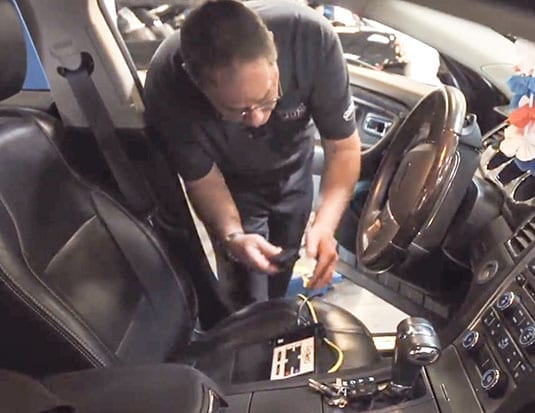Diagnosing what’s wrong, where to find it and how to correct it.
Following up on his column in the October issue on pre-and post-repair scanning, John Norris takes a look at different types of scans required.
Quick scan
This type of scan is done on a vehicle that does not display any warning lamps, symptoms or airbag deployment.
It checks if any codes are set in any system of a vehicle and what systems the vehicle is equipped within its computer network.
Inspection scan
This type of scan is applied when any warning lamps or messages are seen, visible airbag deployment or codes that did not illuminate a DTC.
This takes a bit longer and needs more effort and knowledge by a diagnostic technician than a quick scan being that codes, data and electronic assessments are taking place.
Diagnostic scan
Done during the repair process this type of scan applies in two different situations:
1) A known problem that required a scan tool to access data, troubleshoot, reset systems, program a replacement module to proceed with vehicle repairs.
2) When additional trouble is found with the vehicle that requires in-vehicle repairs or in-vehicle pinpoint troubleshooting.
Completion scan
This type of scan is done when the vehicle is completely re-assembled before final Quality Control.
Required calibrations and/or necessary programming procedures are done, all systems check and all system codes are clear, verification of warning lamps and basic system functions are verified with all calibration procedures and scan results documented.
Follow-up scan
This type of scan is done when one or more of the following occur:
1) If a warning lamp illuminates during or after Quality Control (QC) with a road test.
2) If symptoms or functions are found to be inoperative during QC procedures.
3) If a particular concern is seen during a completion that warrants additional confirmation.
4) If a customer returns with a warning lamp or system problem.
Shops should remember that a number of vehicles will send DTC fault codes directly to the customer’s smartphone, so the customer will know if the car repair is incomplete, but remember that some codes will ONLY show after a few days of driving and the customer should be told to then return the vehicle and that those codes may not be visible when the vehicle was released.
Scanning means that two new, incredibly important trends are now going to happen in the industry. More information is available at ciia.com, oem1stop.ca and oemrepairinfo.ca.
Customers will now know through their phones if the job is done right—that means your customer is now your vehicle repair auditor and you can bet they will want any fault code that they believe a shop might have caused in the repair to be immediately fixed.
Shops must also realize that this change to fault code scanning is a major technical training change and that they may be quickly left behind if shop owners don’t recognize it.



